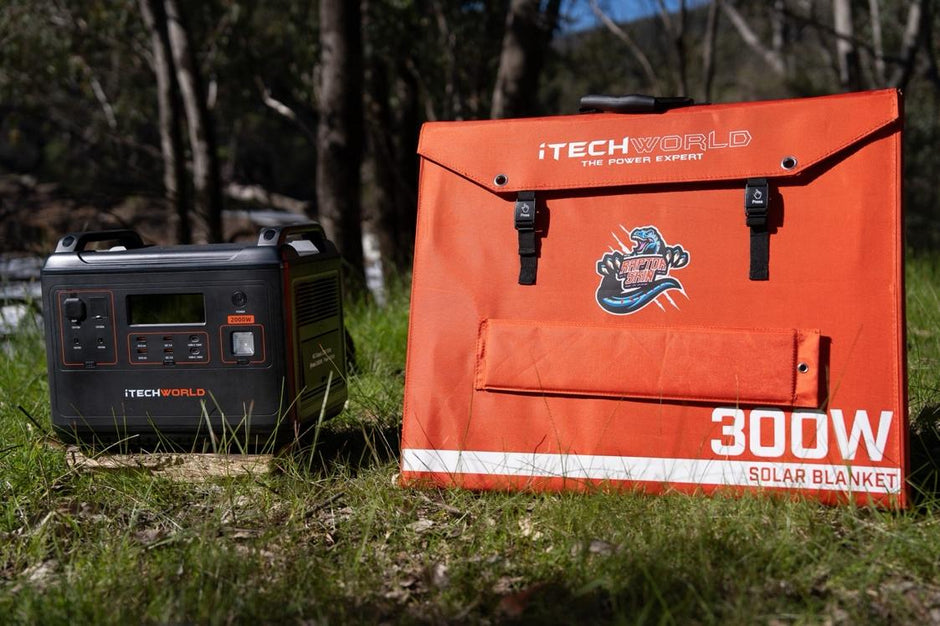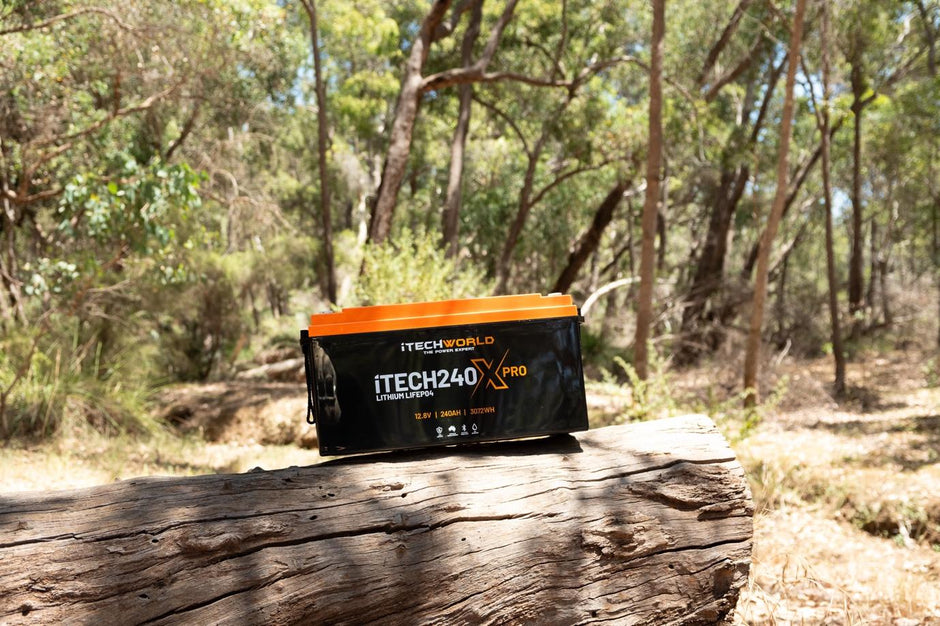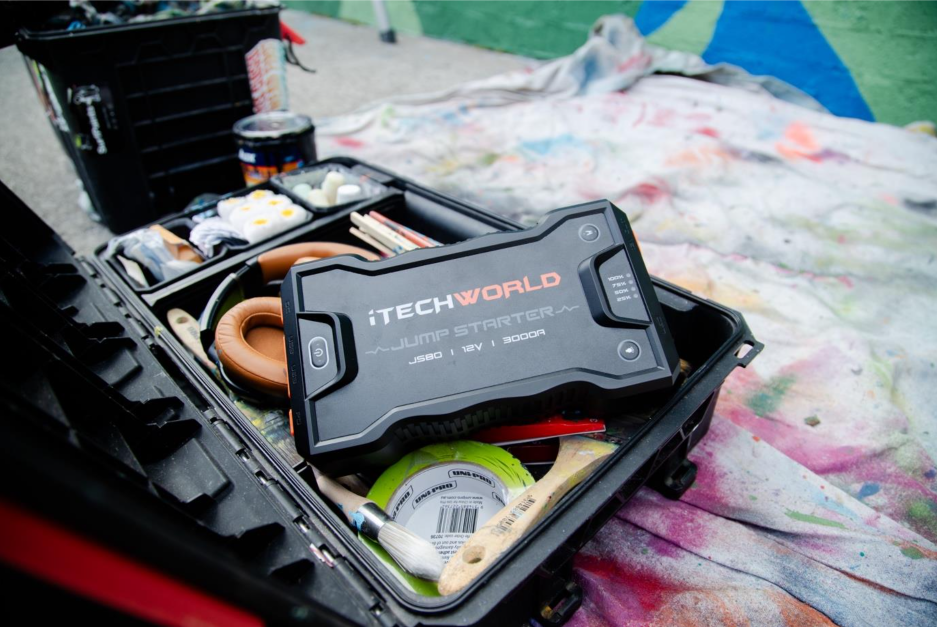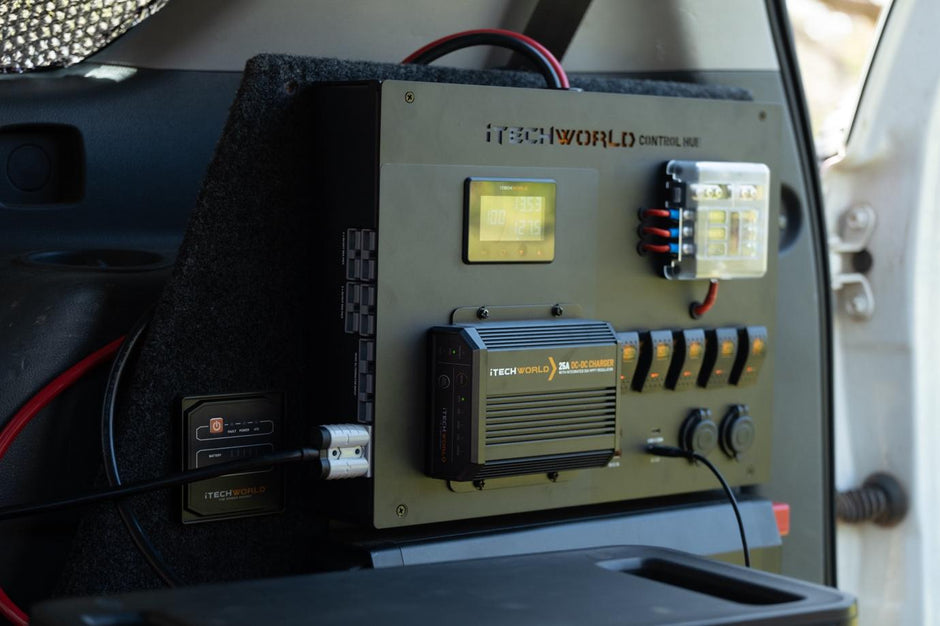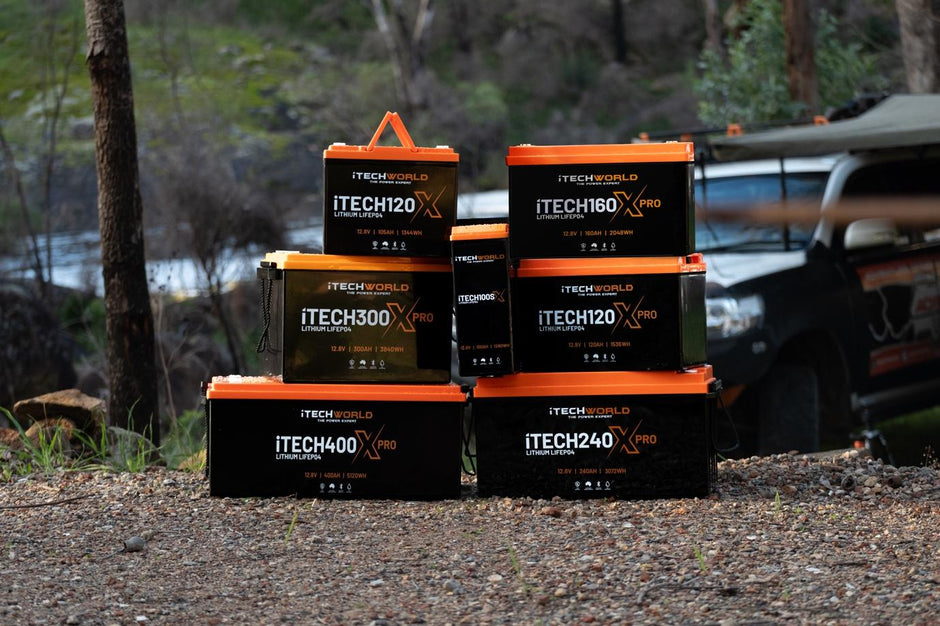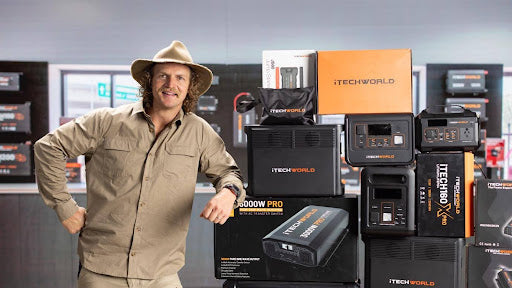Sarah and Keelan's 12V iTechworld Caravan Setup
In this video, Sarah and Keelan discuss their decision to use lithium batteries instead of AGM batteries for their caravan power system. They highlight the advantages of lithium batteries, including higher efficiency and lighter weight, which is particularly important for their small four-cylinder engine vehicle with limited towing capability. Keelan also explains why they use a 3000-watt inverter, DC-DC charger, and solar panels to power their equipment and emphasise the importance of maintaining a balance between battery capacity and solar power. This video offers some amazing insights into their personal experiences around optimising their caravan power system and offer some tips for others who are looking to upgrade their own system.
Check out the Sarah and Keelan Off Grid Caravan Kit here.
Video + Transcript
G'day legends! Welcome back to another midweek episode. This week we're going to talk about the dreaded 12-volt system in your car, caravan, or wherever you use it. We'll run through the gear we use, how we like it, any advice we'd give you, and some of the things we'd do differently next time. I'm Keelan, and this is Sarah. We have been fishing, surfing, and off-roading our way around Australia for the past year now. Meet Percy and Keith Urban, our trusty steeds. Subscribe to join our adventure. We are living on the road full time. It's a pretty steep learning curve, and we've made mistakes - very simple ones, and they can be expensive. One mistake is that the poor man always pays twice. Cliches like that definitely come true. We'll explain why and what we do differently.
To start, we'll look at the engine of this whole setup - these iTechworld 120X lithium batteries. These things, as you'd assume, are 120 amp-hour lithium batteries. We've got four of them here. We chose these batteries because we've run them in our old setup as well as this new setup, tested them, and proven them. Selecting gear is crucial because you're out in the bush, and no one will save you out there. We've tested this gear to withstand some of Australia's toughest conditions. So we're very happy to run and promote these products.
We went with these lithium batteries over an AGM battery for a few reasons. One is the tail-off voltage on an AGM. As the battery percentage lowers, it drops off. So you only get half of the battery's rating. If it's a 100 amp-hour AGM battery, you'll get only 50 amp-hours. Lithium batteries, especially these, give us 85-90% of our batteries, which is massive. Also, weight is a premium for us. We have a Prado, and everyone knows that Prados have only a little four-cylinder engine and not the biggest towing capability. Currently, we're towing 2.5 tons, and the van's ATM is 2.7 tons, but we can't have 2.7 tons in it. We can only have two and a half tons to meet the requirement. So, weight saving is crucial for us, and we have to think about our mods and what we take on the trip.
These batteries weigh 11.8 kilos, so the equivalent size 120 amp-hour AGM battery weighs about 40 kilos, which is huge. So, you can imagine the weight saving over four of these is quite staggering, and we get twice as much out of them. We're running an iTechworld 3000-watt inverter. We chose a 3000-watt inverter because we like to run the aircon off it and other 240-volt appliances. Also, all our camera gear charging is 240-volt, and our inverter stays on constantly.
The reason we opted for lithium batteries instead of AGM batteries is due to a few reasons, one of which is the tail-off voltage on an AGM. As the battery percentage decreases, the voltage drops off, resulting in only half of the battery's rated capacity. For instance, a 100 amp-hour AGM battery provides only 50 amp-hours. In contrast, lithium batteries provide up to 85-90% of their capacity, which is massive. Moreover, weight is crucial for us since we own a Prado, which has a small four-cylinder engine and limited towing capacity of 2.5 tons. To meet this requirement, we can only carry two and a half tons, which means we need to consider the weight of the modifications and gear for our trips.
These lithium batteries weigh 11.8 kilos. In contrast, an equivalent 120 amp-hour AGM battery weighs around 40 kilos, which is huge. Thus, we save a lot of weight, which is staggering over four batteries. Additionally, we get twice as much capacity out of them. We use an iTechworld 3000 watt inverter to run air conditioning off-grid, 240-volt appliances, and charge camera gear. We also went for a big battery system to have peace of mind regarding running out of power. Even when we parked up here at Robe on a cloudy day, we still received enough charge to run the inverter flat out and charge all our equipment.
The next part of our system is the DC-DC charger, an Inner Drive 40-amp system that regulates the alternator charge from Percy, the Prado, as well as the solar on the roof. This charger has been excellent for us, and we have no negative feedback. We get 50 amps from the alternator, and we used high-gauge cable to prevent voltage drop, which occurs at lower voltages and can be harmful. We used 35-millimeter cable from the bonnet to the van to combat this, and it works well. It's now standard on drawbars of Urban caravans.
As for solar, we think that you can never have enough. However, physical space is limiting, whether on the caravan, canopy, or full drive. We installed an external solar port, which is parallel to the main solar, allowing us to increase our solar wattage to over a kilowatt, which is good. In full sun, we get around 43 amps. We would change a few things next time, but we won't get into that. We can fit 840 watts of solar on this 16-foot caravan because the air conditioner is under the bed, freeing up space on the roof. We are running the X-Grid system by Urban, with our batteries. The batteries' max continuous discharge rate enables us to run air conditioners, air fryers, and other appliances. Be careful not to put obnoxiously big battery banks in your caravan or car without having the charging capabilities to replenish them. The trend right now is to install huge battery banks that the charging system can't support. We recommend having twice as much solar in watts to every amp-hour of battery capacity, which we call the battery to solar ratio.

